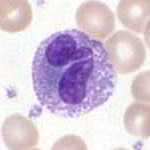
Photo from wikipedia
The role of Aβ plaques and neurofibrillary tangles in Alzheimer's disease (AD) pathogenesis have recently come into question due to failure of many pharmaceutical agents targeting these deposits and detection… Click to show full abstract
The role of Aβ plaques and neurofibrillary tangles in Alzheimer's disease (AD) pathogenesis have recently come into question due to failure of many pharmaceutical agents targeting these deposits and detection of these misfolded proteins in normal human brains. Therefore, we investigated correlations between microglial activation and toll like receptor 4 (TLR4) and Lck/Yes novel tyrosine (LYN) kinase signaling in an AD mouse model. In this study, we used 5-6-month-old 5XFAD and wild type (WT) male and female mice. Immunohistochemistry (IHC) and flow cytometry (FC) were performed on their brains. Cognitive performance was assessed with the Barnes-Maze. IHC showed more Ab aggregation in microglia of female 5XFAD mice compared to their male counterparts. Increased co-localization of microglial TLR4 and LYN was also observed in AD more than WT and females more than males. IHC also suggests microglial phagocytosis of neurons in AD mice, which is supported by FC data. Our FC data also support the involvement of disease associated microglia (DAMs) in this process based on cytokine secretion. Cognitive assessment by the Barnes maze showed 5XFAD females performed worse than males. In this study, we investigated the relationship between microglial TLR4 and LYN kinase in 5XFAD male and females. Our data reveals a correlation between microglial TLR4 and LYN co-localization and AD pathogenesis, more in females than males. Targeting microglial TLR4 and Lyn in DAMs may offer new therapeutic opportunities in the treatment of AD.
Journal Title: Journal of cellular physiology
Year Published: 2022
Link to full text (if available)
Share on Social Media: Sign Up to like & get
recommendations!